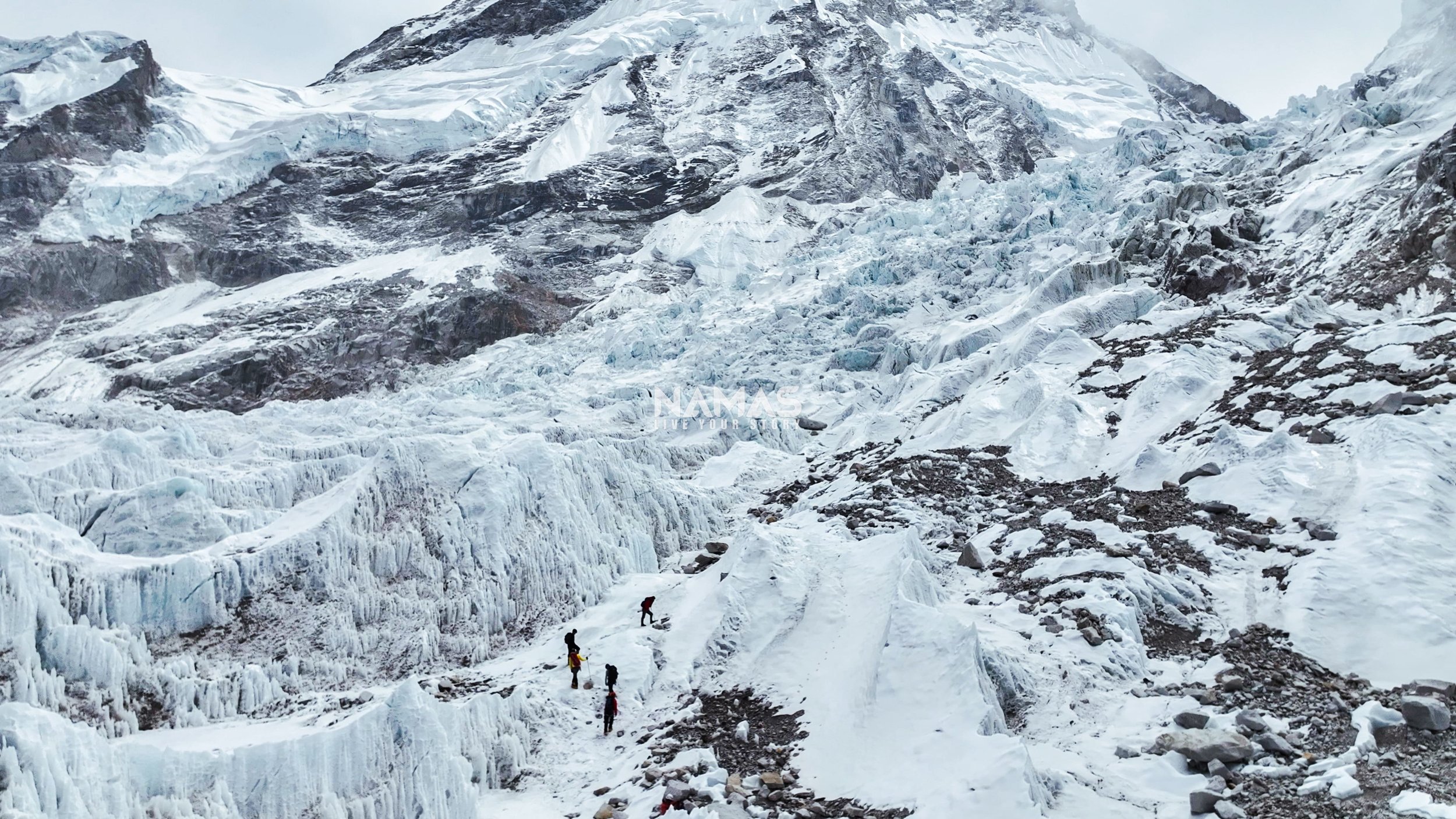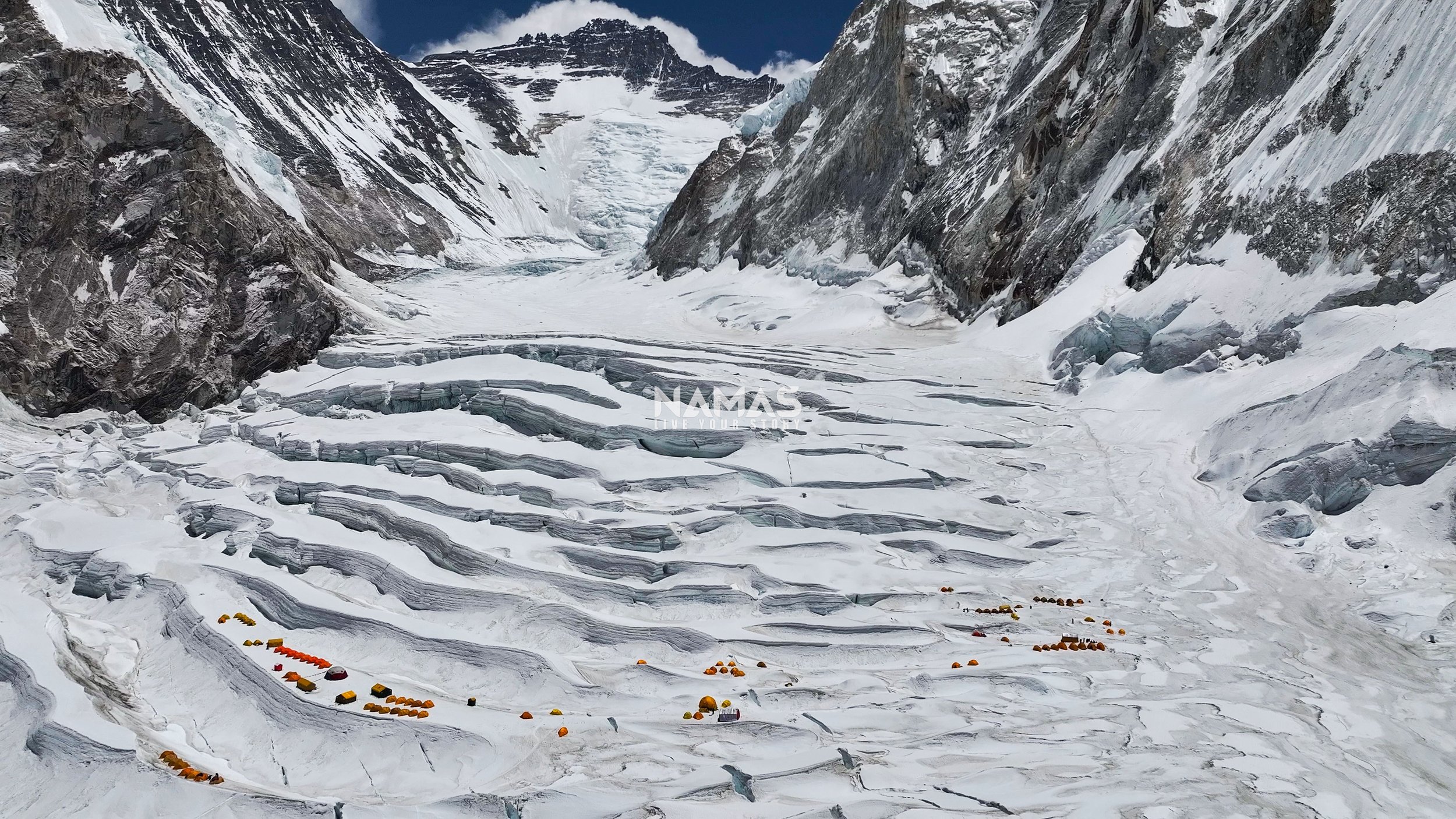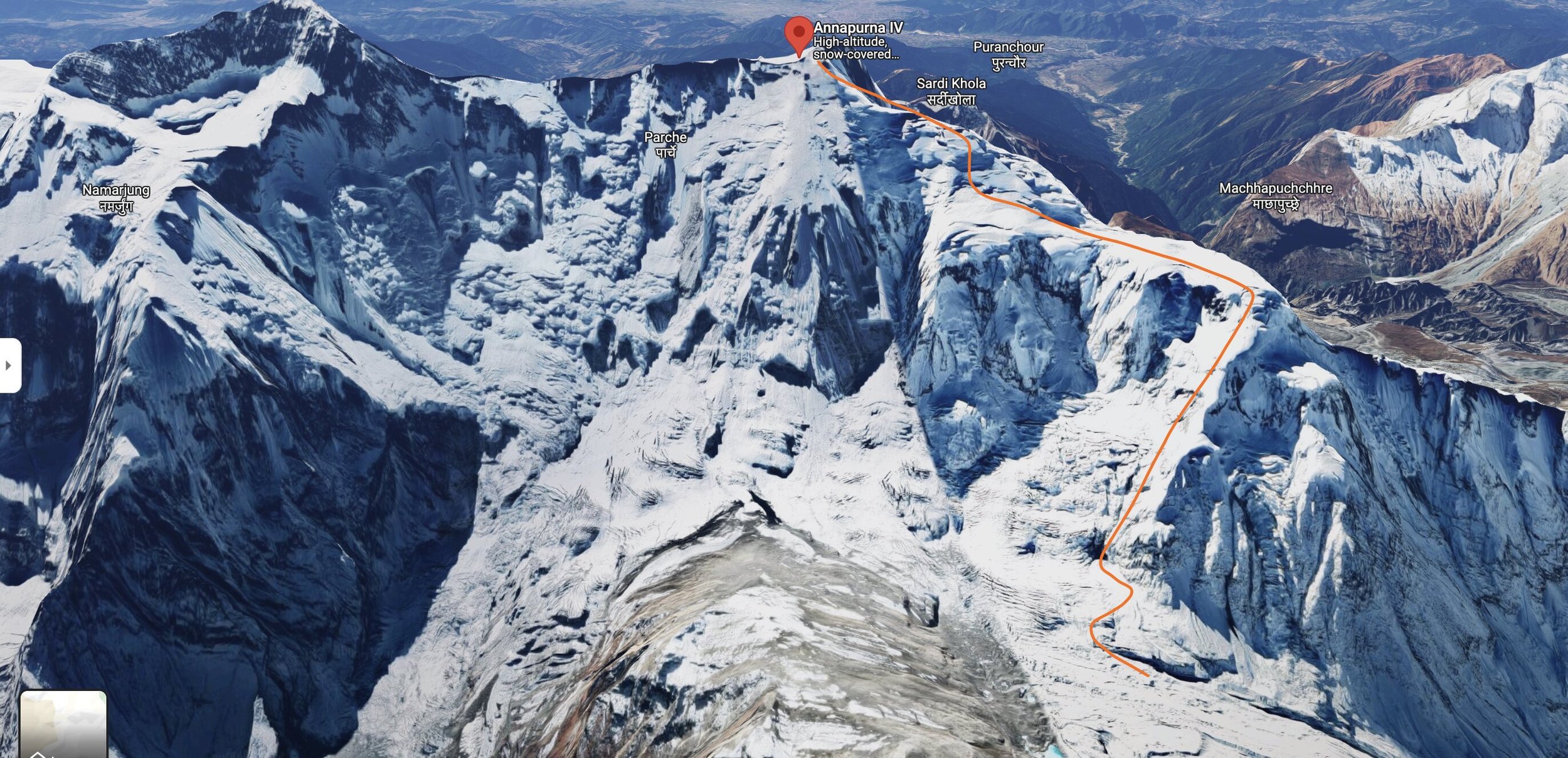Visual journey Everest 8848.86 Expedition Nepal
Early reminder - Click to enlarge on images
Climbing Mount Everest is not just an expedition; it's a breathtaking journey through some of the most visually stunning landscapes on Earth. From the ascent through the Khumbu Icefall's towering seracs to the vast, snow-covered expanse of the Western Cwm, each phase of the climb offers unique, awe-inspiring vistas. The thrill of ascending past the South Col into the thin air of the "Death Zone" combines a mix of fear, exhilaration, and awe, as climbers are surrounded by the world's highest peaks piercing the sky. Reaching the summit rewards adventurers with a panoramic spectacle of rugged peaks under a pristine sky, where the sheer majesty of nature is palpable, making the grueling climb a profoundly transformative experience.
Lukla to Lobuche village
Our Everest expedition journey begins in the cultural city of Kathmandu. Here, we meet the team, conduct expedition briefings, and perform a final gear check. After two days, we fly to Lukla via helicopter and start our beautiful trek through the Khumbu region, visiting picturesque villages like Namche, Phortse, Pangboche, Dingboche, and finally Lobuche.
Kathmandu to Lukla to Kathmandu via helicopter
Lobuche East Acclimatisation
Our first acclimatization rotation is at Lobuche East Peak, reaching an altitude of 6,119 meters. This climb helps us practice technical skills and properly acclimatize before heading to Everest Base Camp.
Learn more about Lobuche East 6119M peak climbing here.
Base Camp 5436M
Base Camp is our home for the entire expedition. We conduct puja ceremonies, and acclimatization rotations, and enjoy a well-equipped camp setup. Facilities include a kitchen, dining area, rest dome tent, communication tent, and toilets. We will also acclimatize at Kalapatthar and Pumori High Camp (5,600m) while waiting for the summit ropes to be fixed.
Khumbu Ice Fall
Traning at Khumbu Ice Fall
The SPCC (Sagarmatha Pollution Control Committee) team fixes the icefall route, and we spend a day training near our base camp. We practice climbing techniques, ladder navigation, jumaring, and abseiling. This refresher training ends with some fun ice climbing on the glacier.
Ice fall route to camp 1 (Max 8 hours)
Once the SPCC announces that the route is fixed, we begin our climb through the icefall to Camp 1. Our first rotation helps us acclimatize and familiarize ourselves with the challenging icefall route.
Camp 1, 6100M
Camp 1 is set up on terraced ice walls, offering stunning views of Everest 8848.86, Lhotse 8516M, and Nuptse 7861M. We spend two nights acclimatizing here before moving to Camp 2.
Camp 1 to Camp 2, 6500M (4 - 5 hours)
The climb to Camp 2 is relatively easy, following a zigzag flat surface and avoiding crevasses. We aim to reach Camp 2 early to avoid the intense sunlight.
Camp 2 - Camp 3, 7100M+ (4-6 hours)
The climb to Camp 3 starts with a flat hike to the base of the Lhotse wall, followed by a steep, vertical ascent. Camp 3 is set up halfway through the Lhotse face wall.
Tiny black dots of climbers moving to camp 3
Camp 3 - Camp 4, 7950M (8-10 hours)
We begin a further vertical climb to Camp 4, passing the Yellow Band and Geneva Spur. This is a tough day with little opportunity to rest
Everest Camp 4
Camp 4 - South Balcony, 8400m (4 - 6 hours)
Starting early, we push for the summit, moving through the Everest South Col route. The views from the South Balcony are spectacular, offering a glimpse of the Tibetan plateau and the Himalayas.
Camp Hillary Ridge, 8790m (3-4 hours)
The climb above the South Balcony towards the South Summit is all uphill before reaching the iconic Hillary Ridge. The Hillary Ridge is exposed and uneven. Climbing higher up the ridge leads to the summit of Everest, the highest point on Earth. The panoramic views of Lhotse, Nuptse, Makalu, Pumori, and Kanchenjunga are unparalleled, making the grueling climb worthwhile.
Summit 8848.86M
Summit of Everest 8848.86M
Descend. Going up is optional, coming down is mandatory.
Reaching the summit of Everest 8848.86, the highest point on our planet, is an unparalleled experience. On a clear summit day, the panoramic views of Lhotse, Nuptse, Makalu, Pumori, Kanchenjunga, and countless other 7000m and 6000m peaks are truly breathtaking. This unique feeling is known only to those who have made the climb.
We offer exclusive small team expeditions (8-12 climbers) both Standard and Express expedition options on both the South and North sides of Everest (beginning in 2026). If climbing Everest is your dream, join our dedicated and expert team to make it a reality.
Is summiting Everest/Lhotse your ultimate dream goal adventure? We have departures every spring. For more information on our Everest expedition or any of our other expeditions, please visit our website.
Feel free to call or WhatsApp us at +1 347-476-9547, or send us an email at bookings@namasadventure.com. We look forward to helping you achieve your mountaineering dreams.
Let’s write you top of the world story.
Live your Story
The Best Spring Climbing Expeditions in Nepal: 7000M, 7500M and 8000M - Namas Adventure
Spring is an excellent time for climbing in Nepal, as the weather is generally clear and stable, and the days are longer. There are several popular peaks to tackle during this season, including some of the highest and most challenging mountains in the world. If you're planning a spring climbing expedition in Nepal, here are a few options to consider and you could join us every spring
Mount Everest 8848M and Lhotse 8516M
This is the crown jewel of Nepal's climbing scene, and it's no surprise that many people flock to the country specifically to tackle this iconic peak. Spring is the best and the busiest season on Everest, as the weather is typically the most favorable. However, keep in mind that it's also the most crowded and competitive time to climb, as there are many other teams vying for the same summit window.
Lhotse is located just next to Everest and shares the same base camp and higher camps up to camp 3, so it's a convenient option for climbers who are already in the area. Many teams and our team offer Lhotse as an add-on or as a solo expedition. Lhotse is the fourth-highest peak in the world, and it offers a challenging and rewarding climb for those who are up to the task.
Level: Advanced to Pro. Time required: 30 to 60 days
Mt. Makalu is the fifth-highest mountain in the world. Standing at 8463 meters tall, this peak is located in the northeast region of the country and sits on the border of Nepal and China. As one of the eight-thousanders, Makalu offers a more technically challenging climb than Mt. Everest and is known for its lack of crowds. The spring season is the best time to tackle Makalu, as the weather and snow conditions are generally favorable. With its distinctive pyramid shape and beautiful views, Makalu is a must-climb for those looking to avoid the crowds of the more popular Everest expedition or for those seeking a new challenge after climbing the world's highest peak.
Level: Advanced to Pro. Time required: 30 - 45 Days
Located in the Khumbu region of Nepal, Ama Dablam is a beautiful and technically challenging peak that is often referred to as the "Matterhorn of the Himalayas." It's a popular choice for experienced climbers who are looking for a less crowded alternative to Everest, and the spring season offers the best weather for a successful ascent.
Level: Advanced to Pro. Time required: 21 - 30 Days
Annapurna I 8091M
Spring is one of the best times to take on the Annapurna massif range. Annapurna I is the tenth-highest mountain in the world, standing at 8019 meters tall. Located in north central Nepal, it is part of the Annapurna mountain range and is considered one of the most dangerous peaks to climb due to its steep and unpredictable terrain. Despite the risks, many climbers are drawn to Annapurna I each year due to its beautiful views and challenging routes
Level: Advanced to Pro. Time required: 30 - 45 days
Annapurna IV (7525 meter) is a lesser-known peak in the Annapurna mountain range of Nepal, standing at 7525 meters tall. It is located between Annapurna II and III. Despite its relatively low elevation compared to other peaks in the range, Annapurna IV is a challenging climb due to its steep and rocky terrain but less technical and dangerous compared with the other Annapurna peaks.
Level: Intermediate + to Advanced. Time required: 25 - 33 Days
Himlung Himal 7126M
This is another exciting 7000M mountain peak to climb during the spring season. Comprised of bit snowy conditions when compared to the autumn season, Himlung Himal is an exciting peak to climb where there are fewer teams taking on the challenge of climbing during the spring. With the right amount of team members (4+) this 7000er is one of the safest and easiest objectives to take on.
Level: Intermedaite to +. Time required: 25 - 30 days
No matter which peak you choose, it's important to remember that climbing extreme and technical high-altitude peaks in the Himalayas is a serious undertaking that requires a high level of fitness, technical skill, and mental fortitude. Make sure you have the necessary experiences, mindset, and commitment to physical training before venturing into these daring endeavors. Namas expedition team can help you navigate the complexities of planning your expedition. With the right preparation and mindset, a spring climbing goals expedition in Nepal can be an unforgettable and life-changing experience.
Let’s go take on your spring climbing goals.
Namas Adventure Team
Live Your Story


















































